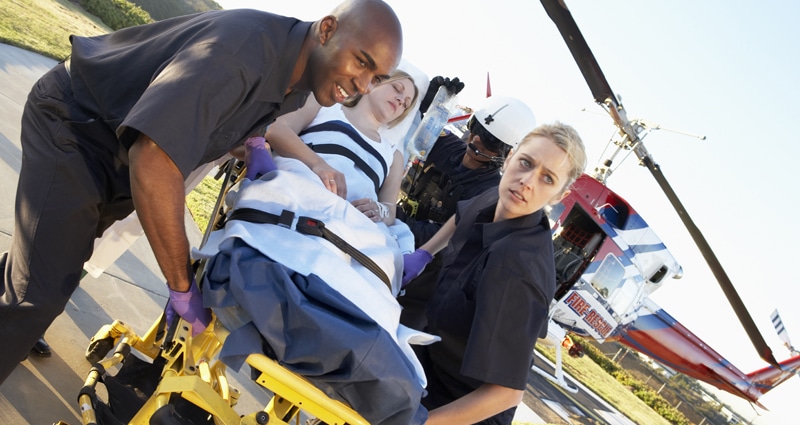High-Consequence Decision-Making: The Data is Telling an Important Story

As an industry, we are very good at examining aviation accidents after they result in injury or tragedy. Regrettably, we fail to take advantage of the proactive learning opportunities—those found when emergencies are averted. Enter the emerging data that our 24/7 active flight monitoring1 is bringing to the surface.
With over 10 years of collective data at our disposal, learning opportunities are vast in business aviation flight activity. With an annual rate of well over 100,000 flights2, we often see how acts of airmanship are preventing accidents and saving lives. None of these are investigated and there are no analyses performed, conclusions drawn, or recommendations made to the industry. Take heart, as change is in the air, quite literally.
In this discussion, we will only scratch the surface of what we are uncovering. To start, we are finding at least one binding ingredient between the aircraft, the data ecosystem surrounding it3 and the avoidance of emergencies: a population of effective decision-makers.
Powerful Predictability Flows From Emergency Preparedness
A profound elegance exists in the science of emergency preparedness. When discernable elements interact in repeatable patterns, those interactions become predictable. When this happens, speculation falls away and truth takes its place. Predictable truth brings forth the confidence required for some of our uniquely human traits:the capacity to apply reason and the freedom to make a choice (versus to act on instinct alone).
Consider a scenario in which a flight crew encounters an uncommanded change in aerodynamic forces, and the longer it continues, the more forceable and urgent the situation becomes. Nothing is making sense; a left control column input is causing a roll to the right. No training memory, simulator scenario or procedure is available in this situation.
A flight crew is on takeoff roll in a different scenario, just having passed V14, when loud noises and severe vibrations ensue. Concurrently, the aircraft begins pulling to the right with no tiller input by the crew. Every training component tells them to continue the takeoff. Every real-world cue tells them something is dangerously amiss and to stop.
We are illuminating scenarios where the cues are so innocuous and misleading that both machines and humans aren’t even sure what they are contending with. In these moments, what defines an effective decision? We are finding some very impactful realities.
Effective Decision-Making Saves Lives
Effective decision-making in high-consequence, low-clarity situations is an ability to be admired. More importantly, it is a competency that continually saves lives, and not just in aviation, of course. Internal questions quickly arise. How will I perform when it is my turn? How do I avoid a colossal flop? What traits can I identify from those who consistently perform?
First, “trait” is not the best word, as it implies some internal component that most of us may not have. “Trust” is a better reference, suggesting an inner faith in something we believe with conviction. Trust is something any of us could attain.
Trust #1: Never evaluate a decision based on the outcome. High performers look to the process they used in decision-making as the crucial determinant, and they govern their decision-making accordingly. Unfortunately, the overwhelming majority believe the outcome is the only relevant criteria to evaluate a decision.
To demonstrate, let’s say you and I were at a bar and you watched me have several strong drinks. At the end of the evening, I am slurring my speech and having trouble walking. Nonetheless, I grab my car keys and decide to drive several miles to my home. I manage not to cause an accident, nor do I inflict harm to myself or anyone else. I arrive safely at home, therefore, the outcome is quite positive. Good decision?
We are wise to celebrate the process of things like intelligence gathering and a disciplined manner of execution, for this leads to the best chance for a positive outcome. Neophytes celebrate luck and congratulate themselves on their intelligence. Worse yet, they try to assign predictability for the future, and they will often “lean on” the memory of that first lucky outcome.
Trust #2: Understand the difference between a clear and present situation and what should happen. High performers can effectively parse what is happening from what is supposed to be happening.
Social scientists examine the effects of societal constructs. Coined “motivated reasoning,” the general population is rife with it. Peter Ditto, Ph.D., a social psychologist at the University of California, Irvine, studies how motivation, emotion and intuition influence judgment. “Motivated reasoning is a pervasive tendency of human cognition,” he observes. “People are capable of being thoughtful and rational, but our wishes, hopes, fears, and motivations often tip the scales to make us more likely to accept something as true if it supports what we want to believe.”
In the concrete sense, a flight crew experiencing a right-hand roll following a left-hand input is more likely to increase the left-hand input. The same is true if you were driving on the freeway and turned your steering wheel slightly left, but your car started drifting to the right. Everything in you would want to turn the wheel more forcibly to the left. Only a few among us would assess and overcome what is happening versus what we wish and expect.
Learning from Catastrophes Avoided
We now return to the flight data5 surrounding events that could have been catastrophic, and by all rights probably should have been, but were avoided by some effective high-consequence decision-makers. The future presents several promising areas from a safety perspective.
We are beginning to peel back the data on these high-consequence decisions and incorporate insights from safety experts who are active pilots. Ultimately, we will present our collective findings to the appropriate federal bodies.
Credit: The content in this article comes from “Outliers in Emergency Response and Risk Management,”; a workshop for Risk Managers and Emergency Management professionals facilitated by Fireside Partners Inc.
References
1 Fireside Partners’ 24/7 Active Flight Monitoring service.
2 2020 flight monitoring numbers were lower than the average, at slightly over 91,000 actively monitored flights.
3 Reference to FOQA and FDM data, the physical dtata related to the flight sequence.
4 A reference to the final decision point to safely reject the takeoff sequence, given runway distance and condition, weather, and aircraft performance.
5 To learn more about Fireside Partners’ active Flight Monitoring Services, e-mail Enable javascript.
 Fireside Partners Inc.
Fireside Partners Inc.Fireside Partners, Inc., is a fully integrated emergency services provider designed to provide all services and resources required to respond effectively and compassionately in a crisis situation. Dedicated to building world-class emergency response programs (ERP), Fireside instills confidence, resiliency and readiness for high-net worth and high-visibility individuals and businesses. Fireside provides a broad array of services focused on prevention and on-site support to help customers protect their most important assets: their people and their good name.
http://www.firesideteam.com/
© 2025 Fireside Partners Inc.. All Rights Reserved.
Next ArticleRelated Posts

Leadership, Accountability and Your Organization’s Risk Profile
Recent media attention has cast light on the unusual number of aviation system-related accidents, incidents and near-misses that have plagued our industry over the past several months.

Aviation Safety—Grounded!
When we talk about aviation safety, our attention often goes to aircraft operational concerns. They are important, but by no means do they represent all the risks in a flight department. So, what’s “the rest of the story”?

